Introduction
Maintaining an edible landscape using the nine Florida-Friendly Landscaping™ principles provides a practical approach to food production for homeowners and landscaping consultants. Integrating practical pest management strategies, addressing nutrient deficiencies, proper pruning techniques, timely harvesting, and mulching are all practices that contribute to a healthy landscape. This publication provides homeowners with key Florida-Friendly Landscaping™ concepts and tips to enhance the health and fertility of soils while protecting the environment. Healthy soils result in improved production yields, beautiful landscapes, and a more resilient environment.
This publication specifically addresses Florida soils and Florida-Friendly Landscaping™ Best Management Practices (BMPs) for building soil for edible plants and maintaining soil health. Florida soils are naturally sandy and extremely low in organic material, resulting in leaching and low nutrient levels. Diverse soil amendments are important in the success of edible plant production because edible plants have special fertilizer requirements and need to be cared for more intensely than ornamentals. As we vegetate the landscape with native and non-native fruit-bearing plants, it is important to consider the nutrients they require for proper development. Topics include soil, disease, growing seedlings, compost, animal manures, and nutrient effects on soil. A glossary of frequently used terms is listed at the bottom of this article. More detailed information suitable for these practices can be found in Edible Landscaping Using the Nine Florida-Friendly Landscaping™ Principles at https://edis.ifas.ufl.edu/publication/EP594.
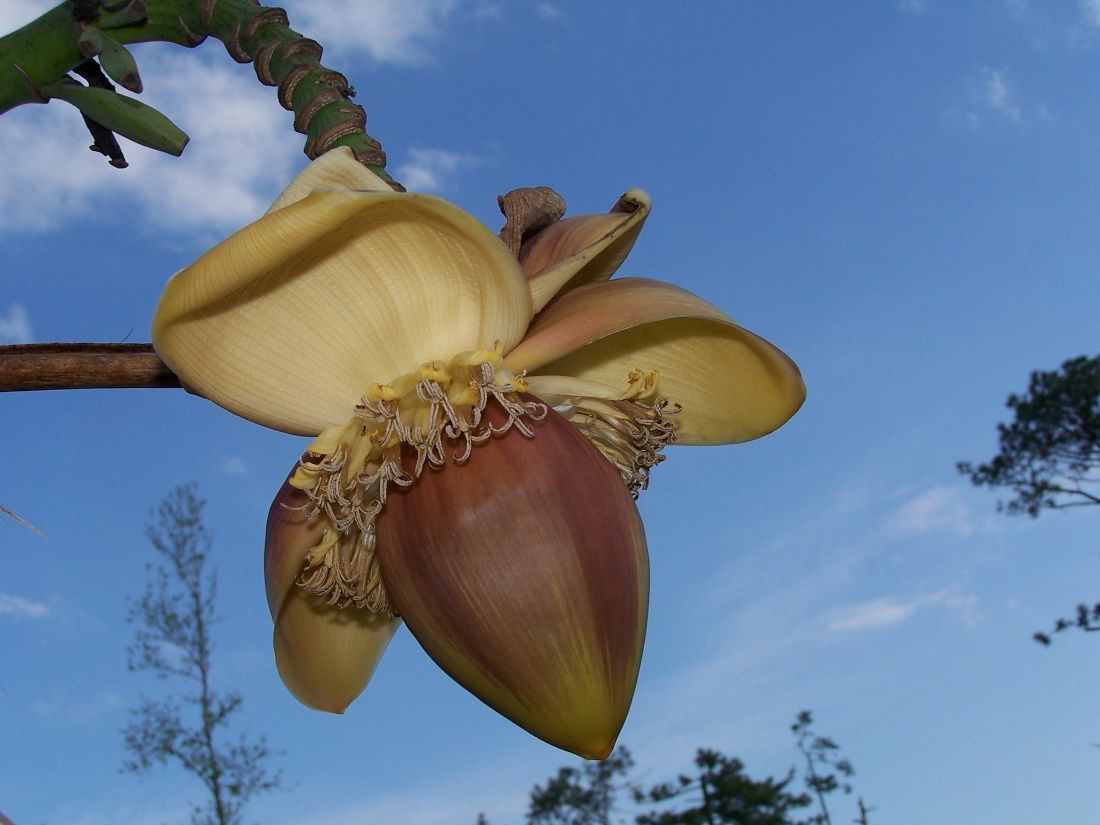
Credit: Tina McIntyre, UF/IFAS
Assessing Soil Health
The foundation for growing healthy plants begins with healthy soil. If soil quality is compromised, plants will produce poor yields, and resources will be mismanaged. Due to Florida’s unique climate, soil properties can vary widely throughout landscapes. Soil structure and type affect a plant’s ability to grow roots and uptake water and nutrients. It also influences the soil’s capacity to retain water, freeze, and thaw. Florida’s geological past has led to nutrient-poor sandy soils, and many Florida native plant species have evolved to require minimal amounts of nutrients. Additionally, microbial activity that aids in organic matter decay, root activity and soil-dwelling animals areaffected by soil structure. Practicing Florida-Friendly Landscaping™ principles can improve soil quality by managing plant-soil interactions and monitoring changes in quality.
Before transplanting edible plants from other sections of your landscape, store-bought containers, or starting seeds, consider assessing soil health in relation to your plant nutrient and pH requirements. High or low pH can affect the availability of soil nutrients for plants. Soil testing for pH, macronutrients and micronutrients can determine suitability for healthy plant development and assist gardeners and landscape professionals in making proper adjustments. Soil pH, compaction, quick-draining soils, and erosion can affect soil quality and should be managed before planting. A soil test will also assess the amount of organic matter in your soil sample. Organic matter is defined as carbon-based compounds from plants and animals, such as manure, that can be added to soil to increase soil health. Organic matter is vital to healthy soil, and therefore healthy edible plants, because it provides nutrients and habitat for microorganisms and binds soil particles, which improves the water-holding capacity of soil. The percent of organic matter is also an important factor in analyzing soil health because organic matter holds water and plays an important role in nutrient cycling, as well as balancing pH. To submit a soil sample and obtain more information on submitting a soil sample to test, pH, nutrient levels, and type, refer to our EDIS publication Soil Sampling and Testing for the Home Landscape or Vegetable Garden: https://edis.ifas.ufl.edu/publication/SS494.
The 14 nutrients that plants require are divided into macronutrients, which are used in larger quantities, and micronutrients, which are used in smaller or trace amounts. The three primary macronutrients are nitrogen (N), phosphorus (P), and potassium (K), often written on fertilizer labels as N-P-K. Other macronutrients include calcium (Ca), magnesium (Mg), and sulfur (S). The micronutrients aremanganese (Mn), boron (B), iron (Fe), zinc (Zn), cupper (Cu), molybdenum (Mo), and chloride (Cl).
Plant growth can indicate specific, deficient nutrients and may be observed as changes in leaf color or growth, like misshapen or stunted leaves. Periodically observe plants and look for signs of nutrient deficiency. Each crop has its own nutritional needs, which should be evaluated before fertilizing or treating a plant for deficiencies. For example, yellowing in young leaves with dark veins may indicate iron deficiency and improper soil pH for blueberries. Following fertilizer recommendations can help prevent nutrient deficiencies and increase harvest in some crops. Nutrient deficiencies exhibited in plants may also result from improper maintenance practices like over- or underwatering. Overwatering can leach valuable nutrients from the soil and, in some cases, cause pollution. The most appropriate method to prevent soil-related plant issues is by ensuring the right plant is in the right place.
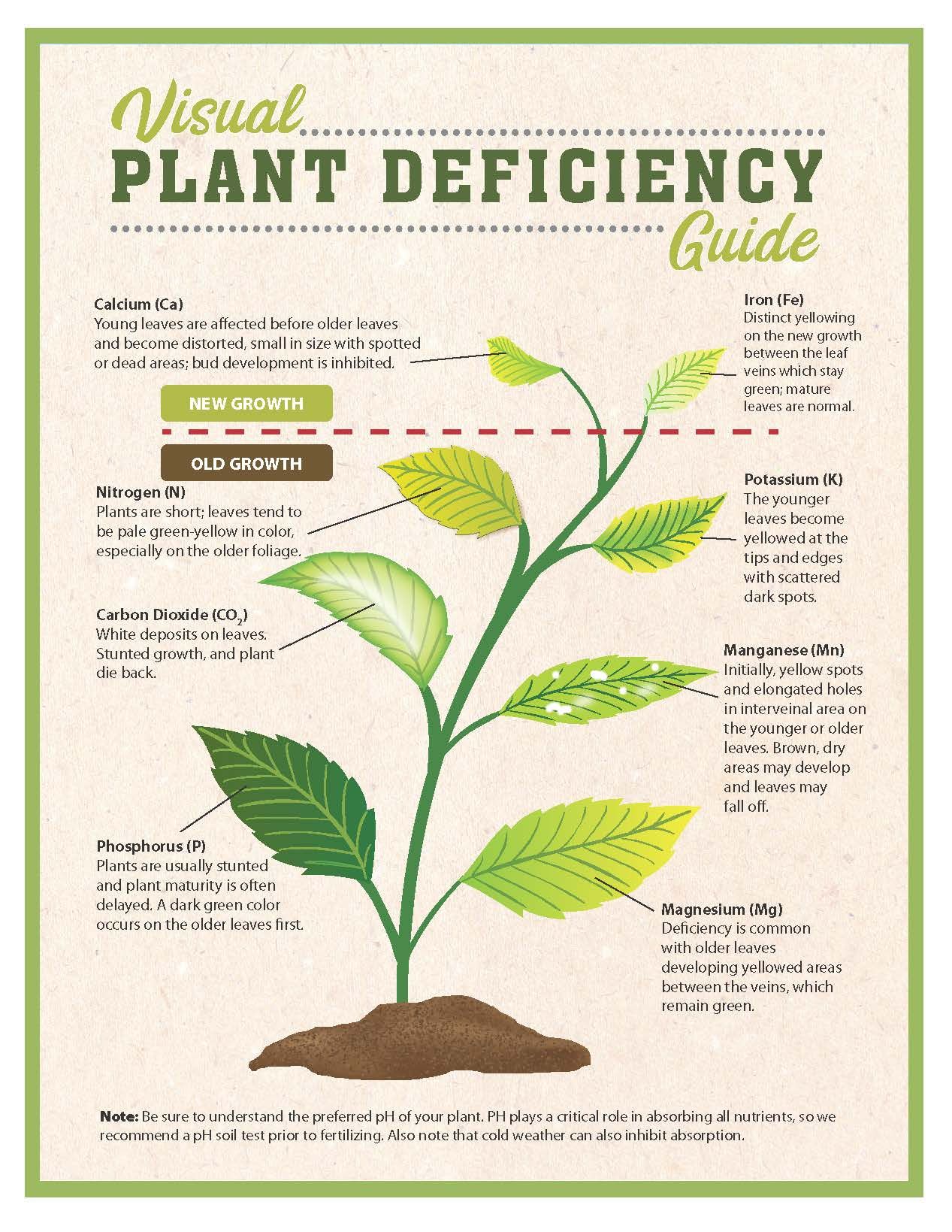
Credit: Tina McIntyre, UF/IFAS
Fertilizing
Most garden beds can benefit from compost or organic fertilizers. When purchasing an organic fertilizer, you will typically see “complete fertilizers,” which contain the three main plant nutrients in the form of nitrogen, phosphoric acid, and potassium. Complete fertilizer labels list the N-P-K ratio. The fertilizer market has many options, some of which may not be suitable for Florida. It is important to note that every herb, vegetable, shrub, and fruit tree has unique needs, and fertilizer labels should be examined carefully to ensure that the fertilizer meets your plant's needs. Soil test results from UF/IFAS Extension Soil Testing Laboratory include fertilizer recommendations. In many parts of Florida, phosphorus is abundant in the soil. If that is the case in your general area, only use fertilizer containing phosphorous if your soil test comes back with a deficiency (a state law).
When fertilizing, be sure to use Best Management Practices (BMPs) in your landscape. If you fertilize inappropriately, your plant will not benefit from the nutrients you are providing, and it can also have environmental implications; fertilizing appropriately is essential to maintaining healthy lakes, rivers and streams throughout our state (Figure 4).

Credit: Tina McIntyre, UF/IFAS
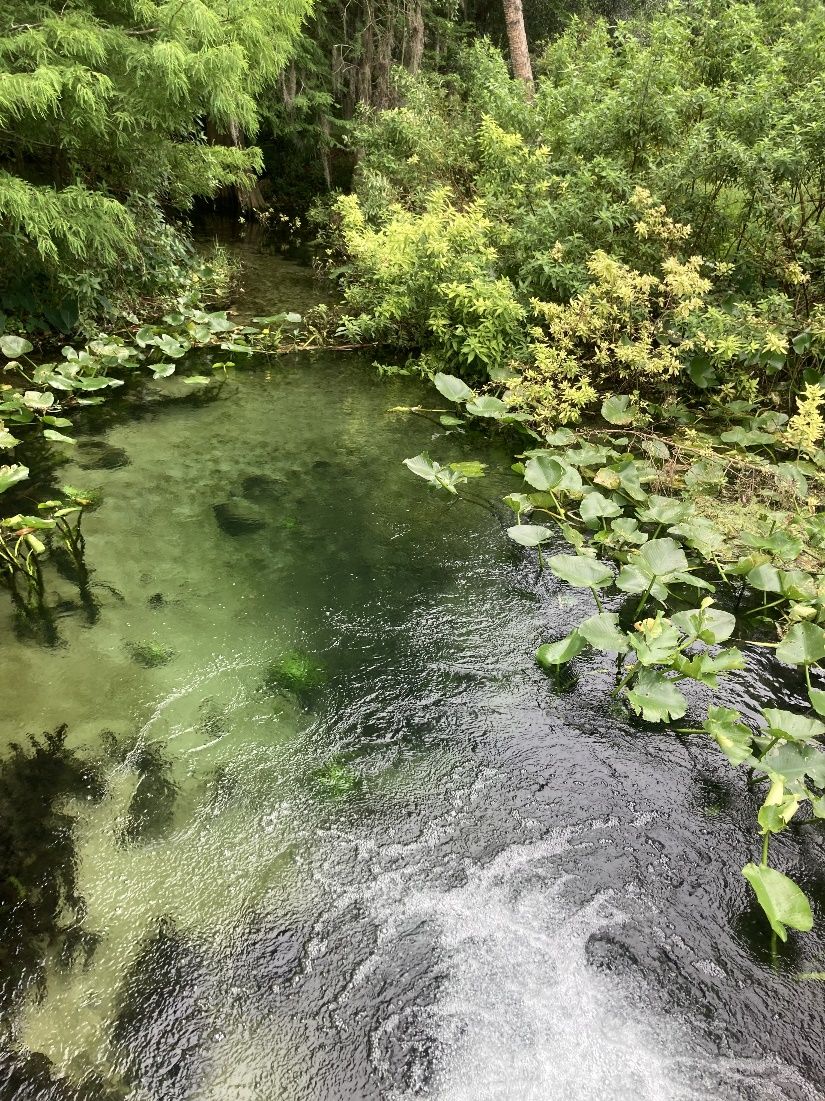
Credit: Tina McIntyre, UF/IFAS
If you are fertilizing, be mindful of local fertilizer ordinances by referring to the Florida-Friendly Landscaping™ Fertilizer App: https://ffl.ifas.ufl.edu/fertilizer/ (Figure 5). Fertilizer runoff is a major contributor to algal blooms in Florida and can damage local ecosystems. To learn more, visit Quantifying Impacts of Fertilizer Workshops on Nitrogen Leaching and Subsequent Economic Impacts: A Case Study at https://edis.ifas.ufl.edu/publication/SS705.

Credit: Tina McIntyre, UF/IFAS
Some fertilizer BMPs include:
- Refraining from fertilizing 24 hours before a rain event, especially if there is a named hurricane or tropical storm.
- Using a slow-release fertilizer; excess fertilizer can cause plant foliage to burn.
- Selecting the appropriate fertilizer (as mentioned above).
- Applying the right rate for your plant.
- Watering fertilizer into the ground with ¼ inch of water.
- Following the label, because the label is the law.
Following fertilizer BMPs benefits fruit trees by allowing the tree to fully absorb the nutrients, and it benefits the grower by contributing to larger yield while protecting the environment. If you have an organic garden, choose organic fertilizers and build the soil with compost. For more information on fertilizing organic edible gardens, see Organic Vegetable Gardening in Florida: https://doi.org/10.32473/edis-hs1215-2013.
Increasing Soil Health and Fertility
Benefits of Adding Compost, Manure, and Mulch
As plants grow, organic matter is depleted. Nutrients are removed from the soil and stored in the plant. Because most vegetables are annual, these nutrients are removed from the soil system. Composting vegetable waste recycles plant nutrients and can be used as an amendment to improve the soil’s structure, water-holding capacity and biological activity. For more information on composting, refer to Recycling Organic Materials to Improve Your Florida-Friendly Edible Landscape: https://edis.ifas.ufl.edu/publication/EP599.
Manure can be used similarly to compost and greatly improves organic matter content in soil. Animal manure from chickens, cows, pigs, sheep, horses, or rabbits should always be composted before use because raw manure can be a risk to food safety. Plant manure includes compost (Figure 6), vermicompost (composting aided by specific worms), and green manure. Composted animal manure is probably the best source of organic matter and fertilizer for the home gardener. It should not be used in excess because of possible crop burning. For more information on manure uses, see Guidelines for Using Animal Manures and Manure-Based Composts in the Garden: https://extension.unh.edu/sites/default/files/migrated_unmanaged_files/Resource002114_Rep3119.pdf.
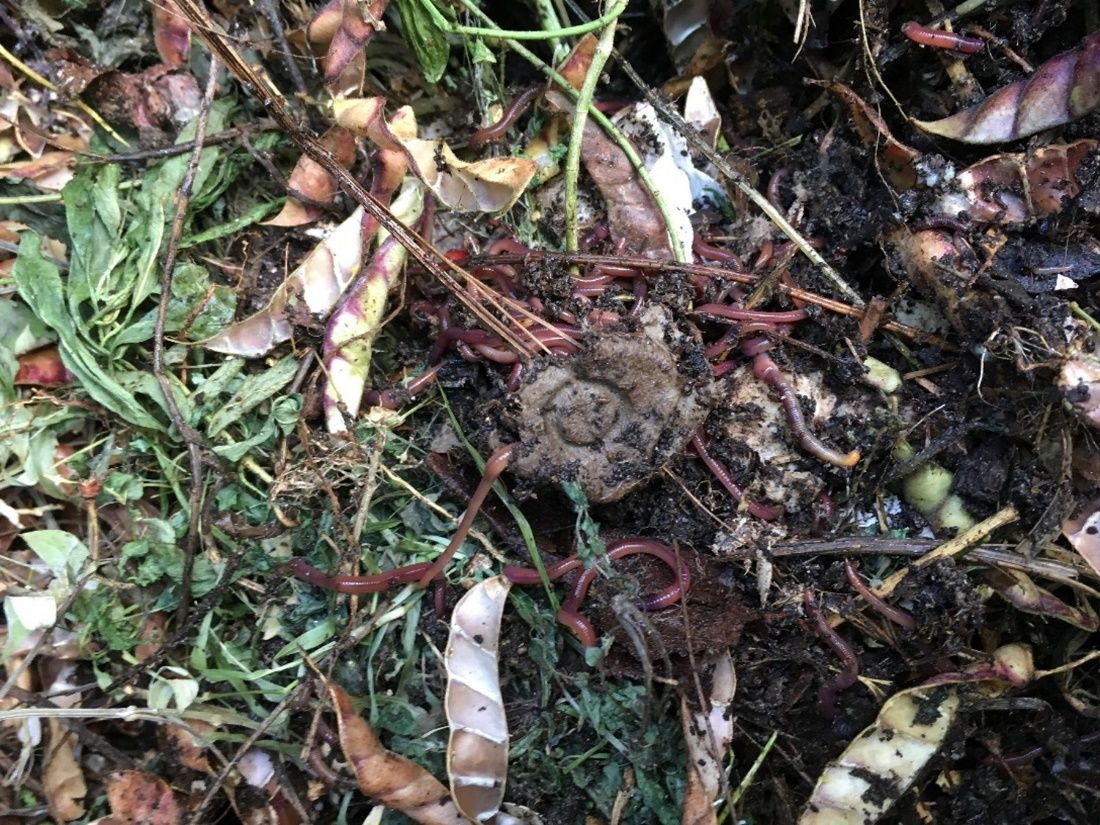
Credit: Tina McIntyre, UF/IFAS
Adding compost, manure, and mulch to your soil will increase the amount of organic matter and improve the health and production of edibles and landscape plants. Compost, often called “garden gold,” benefits Florida’s infertile native soils. Organic mulch contributes to soil health as a result of the decomposition process.
Reducing Compaction
Soil compaction, common in urbanized areas, limits root growth and decreases soil permeability and quality. Reducing compaction will improve soil health by increasing water/nutrient retention and provides a lighter substrate ideal for root growth. Compacted soil can be aerated by planting crops with a deep taproot or tuber, such as brassica crops (mustard, turnips, and radishes) (Cavanaugh et al. 2016). Till and amend soil with organic matter. Avoid walking in garden beds to prevent compaction. Apply organic mulch to retain moisture and increase organic matter. For more information on tilling organic matter into soil, refer to Organic Vegetable Gardening in Florida: https://doi.org/10.32473/edis-hs1215-2013.
Amending soil can improve soil quality, but if stormwater runoff and erosion are issues in your landscape, quality soil may be washed away, resulting in exposed and compromised root systems. Soil compaction is often a result of urban development activities and compresses soil structure, resulting in harmful runoff. Erosion can cause water pollution and topsoil loss, which can be prevented by installing dry creek beds and rain gardens to redirect runoff.
Water Management
Proper water management is an essential Florida-Friendly practice and extends to growing fruits, vegetables, and herbs. Compaction reduces water movement through soil and impacts root development. Overwatering can lead to nutrient leaching, which can seep into the underground aquifer or runoff into nearby water bodies. Saturated soil may encourage harmful pathogen growth due to root rot. It leads to shallow root systems, making your yard and crops more vulnerable to erosion.
A great way to ensure proper watering is to invest in a reliable irrigation system. Controlling the time and rate at which your yard, garden, and trees are watered prevents water waste and pollution. Appropriate and efficient irrigation reduces water use and improves nutrient uptake by plants. For more information on effective irrigation, visit https://edis.ifas.ufl.edu/publication/ae436.
Crops to Fortify Soil
If you are growing annual vegetables, you have a good opportunity to increase soil organic matter by utilizing cover crops, crop rotation, and intercropping. Some edibles and plants can increase soil fertility and are grown specifically for this purpose. For example, legumes can produce 90% of their own nitrogen (USDA-NRCS 1998). When tilled into the soil and allowed to decompose after harvest, approximately two-thirds of that nitrogen is available for the next crop rotation. Some legumes, like pigeon peas (Figure 7), have large taproots that can access nutrients deep within the soil and can break up compacted soil. When composted, nutrients are reintroduced into the soil system for other fruits and vegetables to use. Legumes also improve the soil’s microbial activity and physical and chemical properties (USDA-NRCS 1998). Cover crops, such as cowpea, winter rye, and sunn hemp may also aid in soil recovery, reduce erosion, and aid in pest and weed management. Some are referred to as “green manure,” a crop primarily used for soil amendment and as a nutrient source; examples include cowpea, clover, oats, and buckwheat. Crop rotation is beneficial to soil rejuvenation. By leaving a field fallow for a season or planting another species that will primarily require and use different nutrients, the soil microbiome can recover nutrients from the last growing season.

Credit: Tina McIntyre, UF/IFAS
Intercropping is an ancient practice most notably used by indigenous North American cultures in the Mississippi River valley. This culture frequently planted the “three sisters” together—beans, corn, and squash. In this practice, all three crops benefit. The cornstalk serves as a trellis for the beans, the beans fix nitrogen in the soil, and the squash leaves shade the ground, keeping soil moist and preventing weeds (Landon 2008).
Reducing and Managing Soil Pests
Edible plants may face unique pests and require multifaceted solutions. Florida’s warm temperatures, sandy soils, and humidity provide an oasis for many soil pests and pathogens. Soil health is directly linked to pest management practices. Common soil pests include nematodes, grubs, and some beetles and beetle larvae. Most nematodes are beneficial and may be used as a biological control. Some are plant-parasitic and should be addressed with control measures. For more information on common soil pests in Florida, refer to Insect Management in the Home Garden: https://edis.ifas.ufl.edu/publication/VH036. Some pests and pathogens, such as termites and bacterial diseases, thrive in a moist environment, so proper irrigation can deter harmful pathogens in soil.
Soil Microbiome
The plant soil microbiome is the dynamic, living community of microorganisms that live in soil and interact with plants. Plant soil microbiomes are underground communities made up of bacteria, archaea, and fungi that have potentially harmful or beneficial aboveground implications (Figure 8). The microbiome can help plants adapt to drought, heat, and other stressful conditions. Because the soil microbiome affects plants and vice versa, treating your landscape with care is tied to the health of the microbiome. The soil microbiome is affected by a variety of factors including the soil composition and physical properties, nutrient availability, and plant species. Regularly applying compost, manure, and mulch contributes to soil building and is essential to microorganisms and the environment.
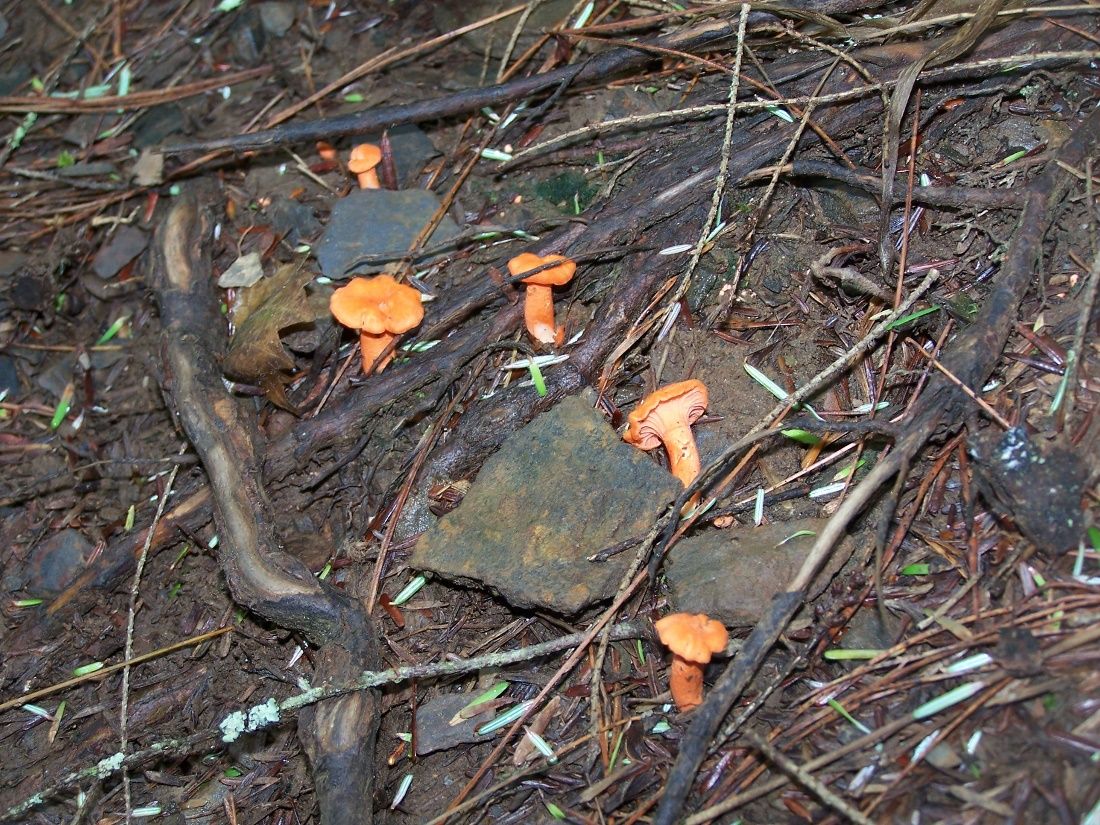
Credit: Tina McIntyre, UF/IFAS

Credit: Tina McIntyre, UF/IFAS
Soil is considered by many to be inert, but it is one of the most diverse ecosystems, consisting of a vibrant community of microorganisms and a thriving food web. This food web connects fungi, bacteria, microarthropods, nematodes, and protozoa that live in healthy, productive soil (Figure 9). Each plays a vital role. Fungi decompose dead wood and replenish organic matter into the soil, then bacteria break down wood and other plant material, and microarthropods shred organic matter, stimulating microbial activity. Nematodes cycle nutrients and can suppress disease; however, some may be harmful. Protozoa can cycle nutrients. For more information, refer to The Importance of Soil Health for Residential Landscapes: https://edis.ifas.ufl.edu/publication/SS664.
The soil microbiome is invariably tied to the health of landscapes. Microorganisms that live in the soil have been shown to prevent and fight against plant pathogens and improve nutrient availability for plants. Mycorrhizae (fungi) systems have been shown to form beneficial relationships with the roots of plants and form a protective cover around the roots, as well as provide the plant with nutrients, primarily phosphorous, and water (Scalera et al. 2019).
Conclusion
These Florida Friendly Landscaping practices are important because as we learn more about the soil microbiome and the cascade effects of a healthy soil community, we also learn our impact on it. Healthy landscapes involve a multitude of factors and revolve around well-informed landscape practices. Soil health and fertility of Florida-Friendly Edible Landscapes are critical factors to the success of growing fruits and vegetables. The information contained in this publication provides the tools needed to be successful. Those include existing soil analysis, assessment and increasing fertility and soil health. Assessing soil health along with proper fertilizing, BMPs, and harboring IPMs will lead to healthy soil, resilient landscapes, and a high yield for fruit and vegetable production.
We would like to acknowledge Lyn Barber, Terra Freeman and Tom Wichman for their contributions to this publication.
Glossary
Organic means relating to or derived from living matter.
Compost is a decayed organic material used as plant fertilizer.
Mulch is material spread around or over a plant to enrich it or insulate it.
Organic matter refers to carbon-based compounds found in nature, as well as engineered terrestrial or aquatic environments.
The microbiome consists of microorganisms in a particular environment.
Soil pH is an indication of the acidity or alkalinity of soil and is measured in pH units.
References
Borden, M. A., E. A. Buss, S. G. P. Brown, and A. G. Dale, A. G. 2018. “Natural Products for Managing Landscape and Garden Pests in Florida.” EDIS 2018 (5). https://doi.org/10.32473/edis-in197-2018
Cavanagh, A., G. Chen, A. Clark, A. Kremen, Y. Lawley, A. Price, L. Stocking, and R. Weil. 2016. “Cover Crops, Brassicas.” Center for Agriculture, Food, and the Environment, UMass Extension Vegetable Program. https://ag.umass.edu/vegetable/fact-sheets/cover-crops-brassicas
Cherr, C. M., J. M. S. Scholberg, and R. McSorley. 2006. “Green Manure Approaches to Crop Production: A Synthesis.” Agronomy Journal 98 (2): 302–319. https://doi.org/10.2134/agronj2005.0035
Dukes, M. D. 2020. “Summary of UF/IFAS Turf and Landscape Irrigation Recommendations.” EDIS 2009 (1). https://edis.ifas.ufl.edu/publication/ae436
Freeman, T., T. Silvasy, L. Barber, T. Wichman, E. Momol, T. McIntyre, J. Rivas, and J. Marvin. 2021. “Recycling Organic Materials to Improve Your Florida-Friendly Edible Landscape.” EDIS 2021 (1). https://doi.org/10.32473/edis-ep599-2021
Landon, A. J. 2008. “The ‘How’ of the Three Sisters: The Origins of Agriculture in Mesoamerica and the Human Niche.” Nebraska Anthropologist 23:40.
Liu, G. D., E. H. Simonne, K. T. Morgan, and G. J. Hochmuth. 2018. “Soil and Fertilizer Management for Vegetable Production in Florida.” EDIS 2015 (1). https://edis.ifas.ufl.edu/publication/cv101
Liu, G., L. Zotarelli, Y. Li, D. Dinkins, Q. Wrang, and M. Ozores-Hampton. 2021. “Controlled-Release and Slow-Release Fertilizers as Nutrient Management Tools.” EDIS 2014 (5). https://edis.ifas.ufl.edu/publication/HS1255
Marble, C., and A. Koeser. 2018. “Improving Weed Control in Landscape Planting Beds.” EDIS 2015 (3). https://edis.ifas.ufl.edu/publication/ep523
Matson, G. C. 1915. The Phosphate Deposits of Florida. United States Department of the Interior Geological Survey. https://pubs.usgs.gov/bul/0604/report.pdf
Peterson, J. M. (ed.). (n.d.). “Soil Structure.” Plant and Soil Sciences eLibrary. University of Nebraska Cooperative Extension Institute of Agriculture and Natural Resources. https://passel2.unl.edu/view/lesson/0cff7943f577/4
Phillips, D., and J. G. Williamson. 2020. “Nutrition and Fertilization Practices for Southern Highbush Blueberry in Florida.” EDIS 2020 (1). https://doi.org/10.32473/edis-hs1356-2020
Reisinger, A. J., and T. McIntyre. 2021. “Quantifying Impacts of Fertilizer Workshops on Nitrogen Leaching and Subsequent Economic Impacts: A Case Study.” EDIS 2021 (6). https://doi.org/10.32473/edis-ss705-2021
Scalera, S., A. J. Reisinger, and M. Lusk. 2019. “The Importance of Soil Health for Residential Landscapes.” EDIS 2019 (2). https://doi.org/10.32473/edis-ss664-2019
Shober, A. L., G. C. Denny, A. J. Riesinger, and E. Z. Bean. 2018. “Soil Compaction in the Urban Landscape.” EDIS 2018 (4). https://edis.ifas.ufl.edu/publication/SS529
Shober, A. L., and R. Mylavaparu. 2018. Soil Sampling and Testing for the Home Landscape and Vegetable Garden.” EDIS 2009 (2). https://edis.ifas.ufl.edu/publication/SS494
Shober, A. L., and A. J. Reisinger. 2021. “Soils and Fertilizers for Master Gardeners: The Florida Gardener’s Guide to Landscape Fertilizers.” EDIS 2018 (3). https://edis.ifas.ufl.edu/publication/mg448
Sideman, B., C. Majewski, N. Haddad, and T. Buob. 2018. Guidelines for Using Animal Manures and Manure-Based Composts in the Garden. UNH Extension. https://extension.unh.edu/sites/default/files/migrated_unmanaged_files/Resource002114_Rep3119.pdf
Silvasy, T., L. Barber, E. Momol, T. McIntyre, T. Wichman, G. Hansen, J. Marvin, T. Freeman, J. Sewards, W. Wilber, and J. Rivas. 2020. “Edible Landscaping Using the Nine Florida-Friendly Landscaping™ Principles.” EDIS 2020 (5). https://doi.org/10.32473/edis-ep594-2020
Solodev. (n.d.). “Fertilizer Ordinance: Seminole County.” http://www.fertilizeflorida.com/
St. Johns River Water Management District. 2020. “Understanding Algal Blooms.” https://www.sjrwmd.com/education/algae/
Toor, G. S., A. L. Shober, and A. J. Reisinger. 2018. “Soils and Fertilizers for Master Gardeners.” EDIS 2018 (3). https://edis.ifas.ufl.edu/publication/mg454
Treadwell, D. D., S. P. Brown, J. Stephens, and S. Webb. 2016. “Organic Vegetable Gardening in Florida.” EDIS 2013 (6). https://doi.org/10.32473/edis-hs1215-2013
Trenholm, L. E. 2018. “Homeowner Best Management Practices for the Home Lawn.” EDIS 2004 (8). https://edis.ifas.ufl.edu/publication/ep236
Trenholm, L. E., A. L. Shober, and E. Z. Bean. 2018. “Preparing to Plant a Florida Lawn.” EDIS 2018 (3). https://edis.ifas.ufl.edu/publication/LH012
UF/IFAS Gardening Solutions. 2019. “Organic Soil Amendments.” https://gardeningsolutions.ifas.ufl.edu/care/fertilizer/organic-matter/
USDA-NRCS. 1998. “Legumes and Soil Quality.” Soil Quality—Agronomy Technical Note No. 6. https://www.nrcs.usda.gov/Internet/FSE_DOCUMENTS/nrcs142p2_053276.pdf
Wang, Q., Y. Li, E. A. Hanlon, W. Klassen, T. Olczyk, and I. V. Ezenwa. 2019. “Cover Crop Benefits for South Florida Commercial Vegetable Producers.” EDIS 2022 (3). https://edis.ifas.ufl.edu/publication/SS461
Wasielewski, J. 2018. “Do You Want Your Fruit Trees to Produce? Here's How!” UF/IFAS Extension Miami-Dade County. http://blogs.ifas.ufl.edu/miamidadeco/2018/07/27/do-you-want-your-fruit-trees-to-produce-heres-how/
Webb, S. E., and F. A. Johnson. 2006. “Insect Management in the Home Garden.” EDIS 2006 (6). Archived. https://edis.ifas.ufl.edu/publication/VH036
Wright, D. L., C. Mackowiak, and A. Blount. 2017. “Cover Crops.” EDIS 2017 (6). https://edis.ifas.ufl.edu/publication/AA217